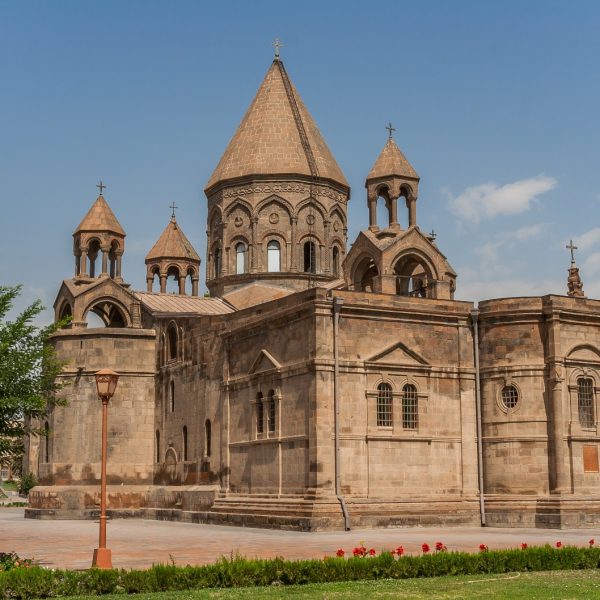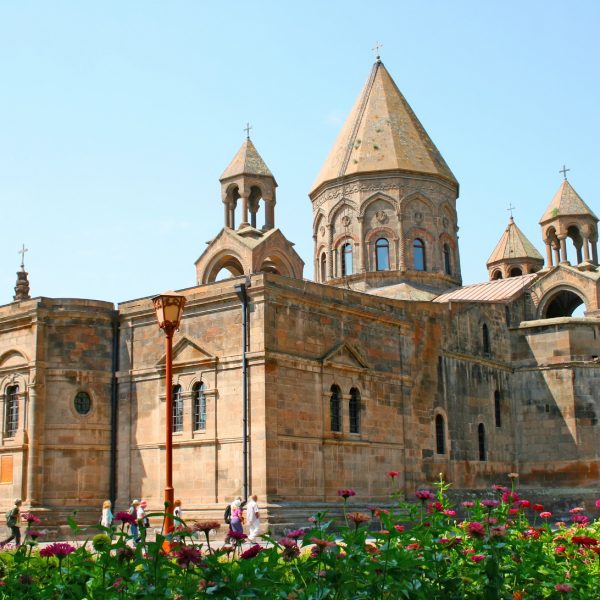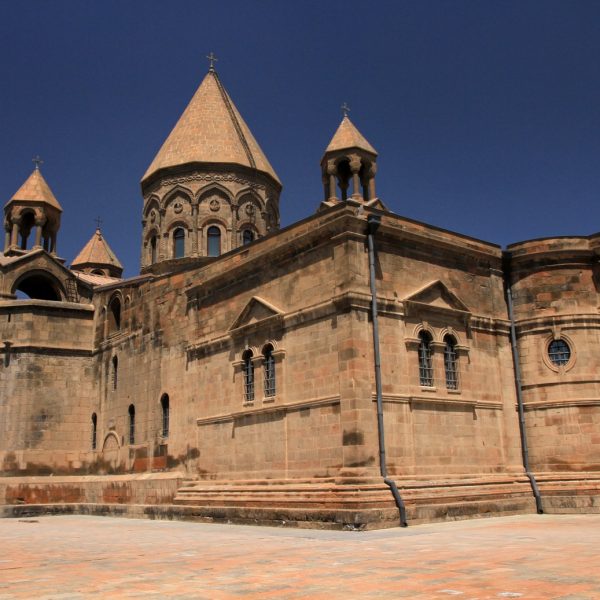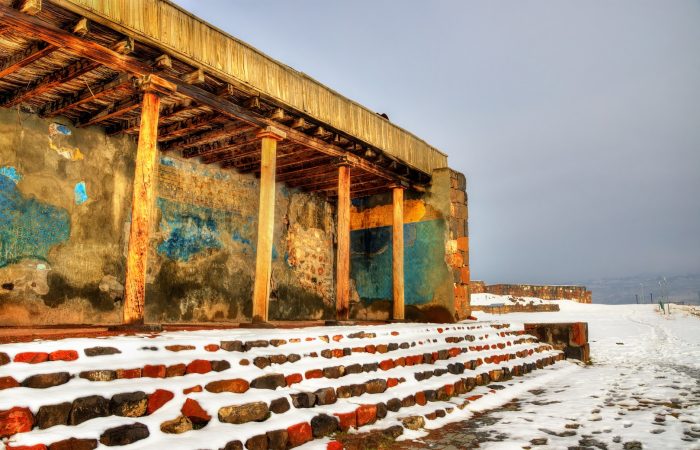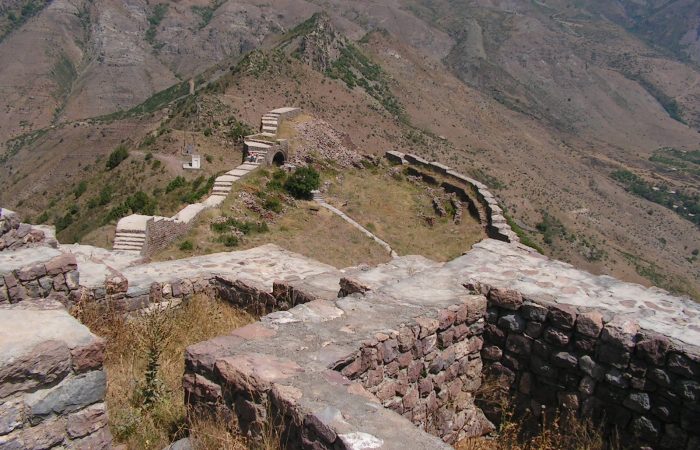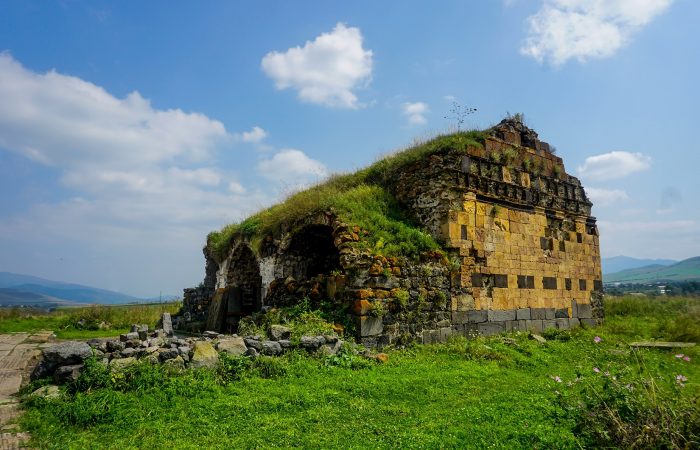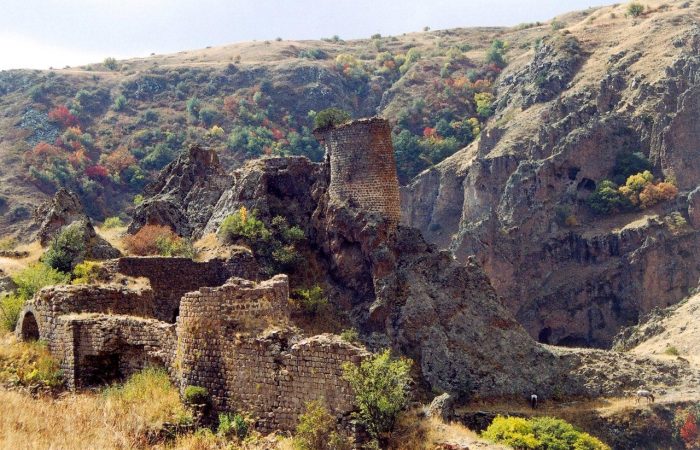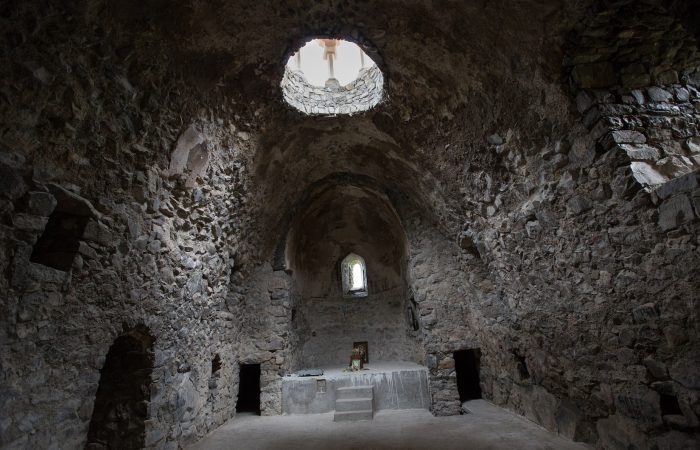Gregory the Illuminator’s Vision
It is believed that one day Gregory the Illuminator had a vision in which he saw Jesus Christ descending from heaven with a gold hammer and hitting the ground with it, that way indicating the spot where he wanted a church to be built.
“I saw an awe-filled human appearance, great and wonderful, who was leading all and from the highest to the lowest, He was before them. He had a great golden hammer in his hand, and all were following Him. He was coming with great speed, flying up like a swift eagle and descending down to the firmament of the Earth, in the center of the city, struck the vastness of the land, and an awful wailing resounded up from the chasms of hell.”
The church was ultimately built in 303 and named Mother Cathedral of Holy Etchmiadzin (also spelled as Ejmiadzin or Etchmiadzin). Translated from Armenian into English Etchmiadzin means “the descent/the coming of the Only Begotten Son.”
Etchmiadzin Cathedral
Etchmiadzin catheral is located in the city of Etchmiadzin (20 kilometers from Yerevan) founded in the first half of the 2nd century (was initially named Vagharshapat). Since 1441 the city has been Armenia’s religious center. Today it’s the center of the Armenian church where the Catholicos of All Armenians resides. The cathedral is surrounded by beautiful gardens and structures.
Etchmiadzin Cathedral: Throughout the Years
Throughout the years the cathedral has faced a number of difficulties and strikes. In 360 Persian King Shapur II attacked Armenia and attempted to convert the cathedral into a Zoroastrian temple. As soon as Shapur’s forces left, Catholicos Nerses the Great rebuilt the cathedral. After Armenian Alphabet was invented by Mesrop Mashtots in 405, Mesrobian Armenian language school was established. It was founded near the Catholicosate.
In 484 the Pontifical See of the Armenians was moved to Dvin, which was Armenia’s political center then. Despite that, Etchmiadzin never ceased being the religious center. Ghazar Parpetsi who was a fifth century Armenian writer mentioned in his writings that it was then that Vahan Mamikonyan was appointed the leader of Armenian provinces. Among the many things he is remembered for, the renovation of the Etchmiadzin Cathedral is one of the significant ones, because after those renovation works the cathedral acquired its present day look and appearance.
Tenth century Armenian historian Hovannes Draskhanakertsi wrote that in 618 Catholicos Komitas replaced the cathedral’s wooden dome with a magnificent stone dome. In 931 the Catholicosate was moved from Dvin to Akhtamar, then to Ani and afterward, to Cilicia, where an Armenian Kingdom was established in 1198. In 1441 a decision was passed to return the Catholicosate to Etchmiadzin. Newly appointed Catholicos Kirakos Virapetsi (1441-1443) launched the cathedral’s renovation works.
Later on the cathedral greatly suffered form the continous Turkish-Persian wars. Especially hard and great were the damages caused by the 1635-1637 war. The cathedral was repaired by Catholicos Pilippos Aghbakeci. But he is more known for establishing the cathedral’s belfry. The architect of the bell tower was Sahak Khizanetsi, and the author of the frescoes was Zaqare Voskerich. So the cathedral has been constantly repaired.
Massive reparation works started in the 20 century after Catholicos Gevorg Z. addressed to all Armenians asking them to support the reparation works. His appeal was not ignored. Benefactor Calouste Gulbenkian expressed willingness to support the works, and they were ultimately launched. Already in 2001 the 1700th anniversary of adopting Christianity as state religion was celebrated in the renovated Mother Cathedral.
Etchmiadzin Cathedral: Architecture
Although the cathedral has been renovated and repaired for a myriad of times, it still correponds to the building Gregory the Illuminator saw in his vision, “On the crosses of four columns, bound to each other were extraordinary arches, and on this I saw an amazing structure created by God, in the shape of a dome.”
Excavations conducted in 1950 proved that since the fifth century the cathedral had a rectangular cruciform structure with a dome. The excavations also showed that at the beginning of the first millenium BC there used to be a shrine. According to Armenian historians, the first Christian churches were built in the places of pagan temples. Similarly, Etchmiadzin Cathedral was built in the place of a pagan temple devoted to Goddess Artemis. The excavations of the 1958 revealed the Main Sacristy under the Mother Cathedral’s Main Altar. It was found at the depth of 1-1.5 meters. The shrine with its columned bases is believed to be built in the fifth century by Vahan Mamikonyan.
The sacristy is double layered and inside it, the walls of an even older altar have been discovered. Interestingly, the base stone of the discovered sacristy was found right upon a fireplace, which symbolizes Christianity’s triumph over paganism. A stone obelisk was discovered under the fireplace of the pagan temple. Found in horizontal position it belonged to the Urartian period, and it is currently placed in the cathedral’s northern part as a memorial hinting at the place’s being an important spiritual center thousand years before the Mother Cathedral was built.
The ancient altar was preserved. A staircase taking to the old altar was constructed behind the new one.
Etchmiadzin Cathedral : Domes
In 1682 Caholicos Eghiazar Ayntapetsi built belfry-like domes on the northern and southern apses and the Main Altar. Thus, the number of domes made up five. The cathedral’s main dome is in the central part, while the other four make a cross around it. The main dome is multi-layered. It is decorated with columns and from outside and has twelve facets and twelve windows. The bas-reliefs of the twelve apostles are depicted on the twelve facets.
Etchmiadzin Cathedral: Entrances
The cathedral has three main entrances with the main entrance being form he the belfry, while the other two from the cathedral’s northern and southern parts. The fourth historical entrance was located in the cathedral’s eastern angle, where there is currently a awall. The only evidence proving there was once a door is the arch above it. The legend has it that King Tiridates and his family used to enter the cathedral from there.
Etchmiadzin Cathedral: Catholicosal Thrones
There are two catholicosal thrones in the cathedral. One of them can be found in front of the bema. It was made and gifted to Etchmiadzin Cathedral in 1721 by the Armenian community of Smyrna. It is covered with a wide dome decorated with pearls and gold. The second throne is placed near the north-western column. It was a gift to Catholicos Nahapet I Edesatsi made by His Holiness Pope Innocent XIII Patriarch of the West and Bishop of Rome, Head of the Roman Catholic Church in 1696.
Mother Cathedral of Holy Etchmiatsin is not a church to visit just as another place of interest, it’s where you can light a candle, pray and be sure to be heard high above in the heaven from where our Heavenly Father watches us and takes care for our wellness. Both the cathedral and the garden around are simply marvelous and remarkable and full of spirituality.

